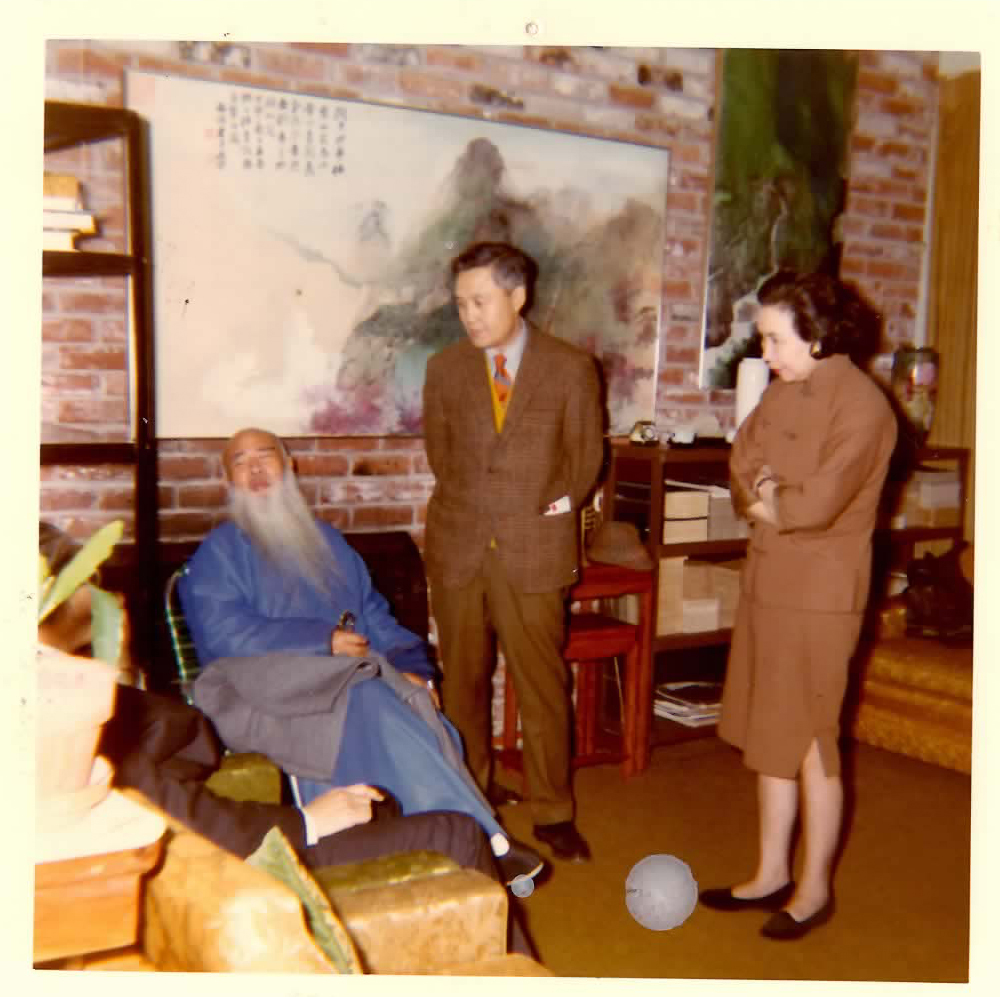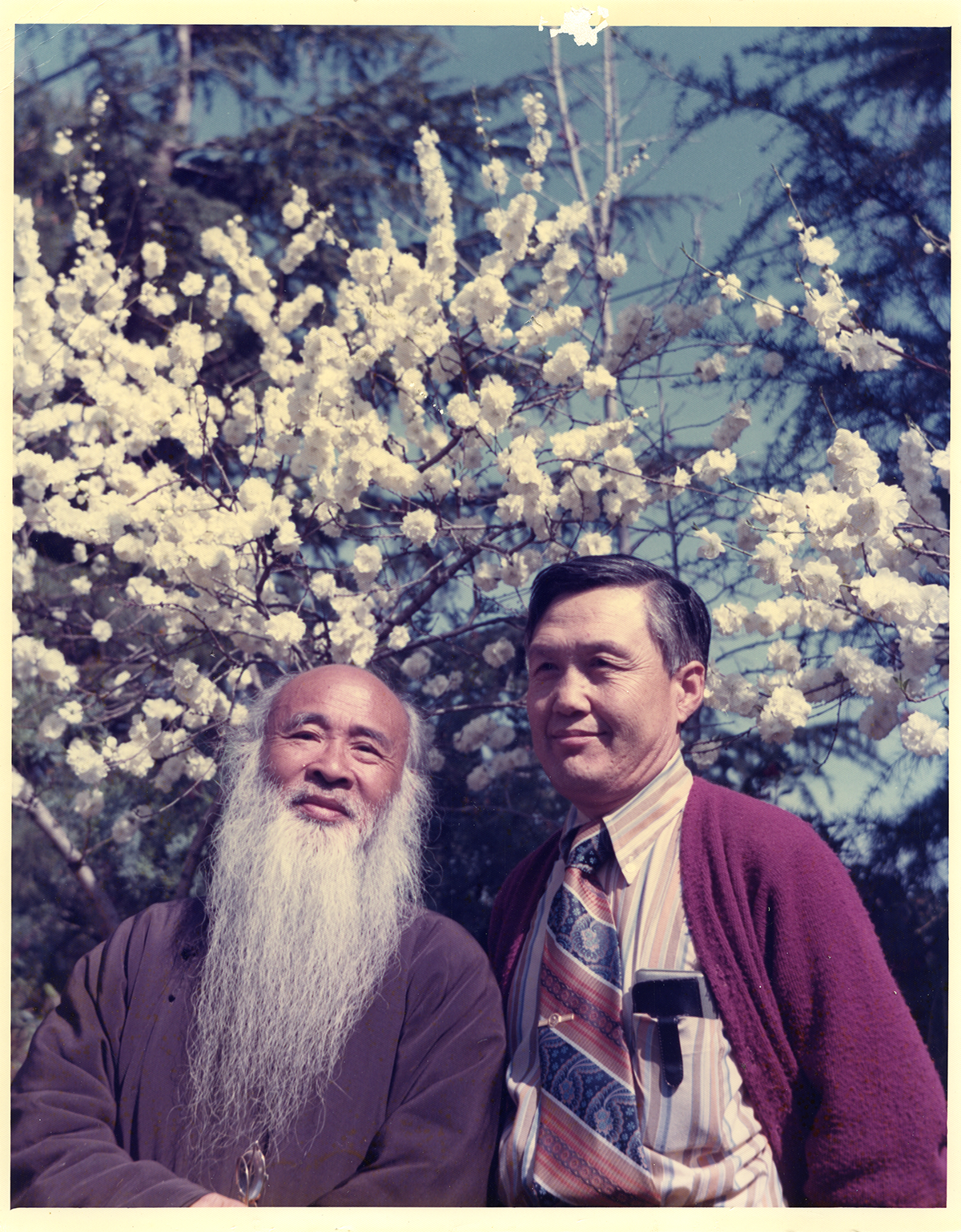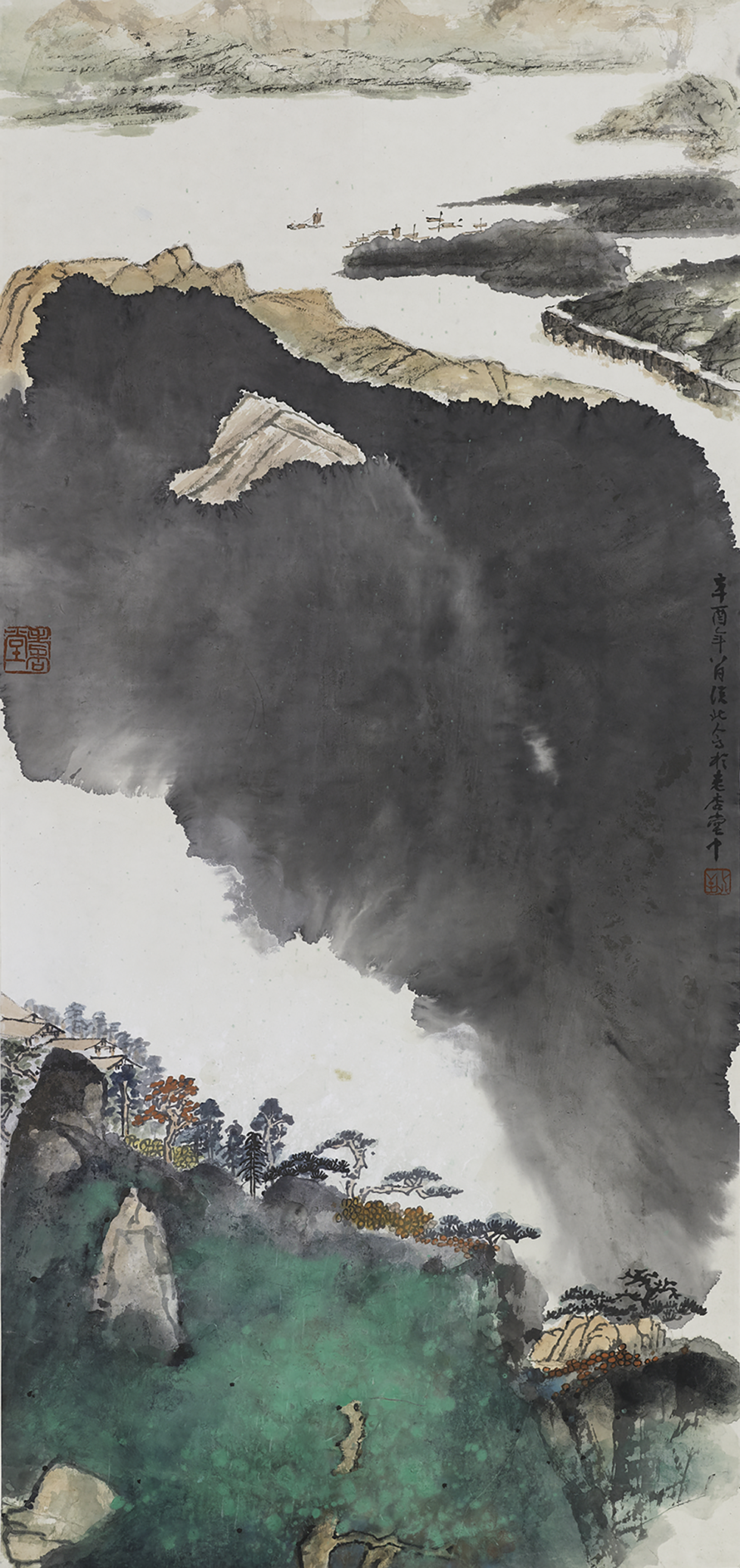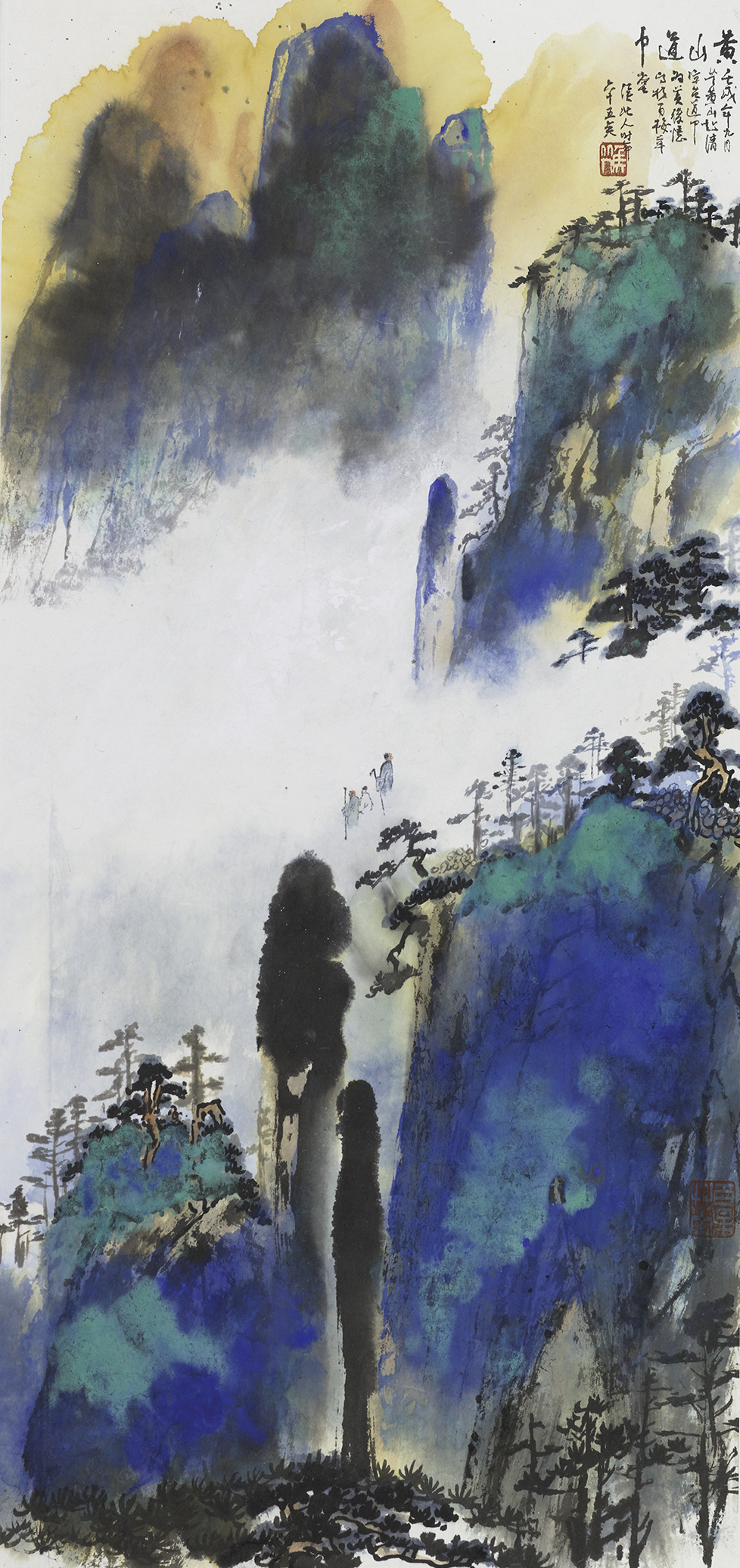5. Bay Area Ink
Zhang Daqian was a frequent visitor to California beginning in the mid-1950s. Then in 1971, he moved to the Monterey Peninsula at Pebble Beach, near Carmel-by-the-Sea, where he remained until retiring to Taiwan in 1978. Through the 1960s and ’70s, Hou Beiren regularly visited Zhang Daqian, and came to meet and know other Chinese artists who worked in the region. These included the Guangzhou-born Lim Tsing-ai (Lin Qingni, 1914–72); Fu Wenyan (1920–), who also had studied with Zhang Daqian in Shanghai; Fong Chungray (1934–), a pioneering Asian American abstract painter and a member of the Taiwan-based Fifth Moon Group (Wuyue huahui); and the Malaysian-born Cheng Yet-por (1907–91), who lived in San Jose, and whose painting style resembled that of Qi Baishi (1864–1957).
Other artists whom Hou knew included James Yeh-jau Liu (Liu Yezhao, 1910–2003) and Wang Chang-chieh (Wang Changjie, 1910–99), who, along with Cheng Yet-por, all had been trained at the China Art Academy in Hangzhou before fleeing to Taiwan in 1949, subsequently resettling in the Bay Area. These painters regularly exhibited together during the 1960s and ’70s in the Laky Gallery, which was based in Carmel but operated satellite spaces in San Francisco and Los Angeles; in galleries in San Francisco’s Chinatown; and at Lim Tsing-ai’s East Wind Gallery.
In 1973, Hou Beiren and his wife went on to establish their own business, the Chinese Art Gallery, through which Hou sold his work,1 and in 1979—the year in which China and the United States reopened diplomatic relations—he founded the American Society for the Advancement of Chinese Arts ASACA. The organisation's mission was to schedule exhibitions and to facilitate an interchange of ideas and artworks between the US and China.
Although the Asian and Chinese Bay Area ink painters were a disparate group, there are shared qualities—a looseness in their use of ink and roughly textured dynamic brushwork. Also evident is an exploratory engagement with contemporary approaches in terms of technique, subject matter, scale, format and treatment of medium.2 As the most famous living Chinese artist of the period, Zhang Daqian exerted great influence on Chinese painters in Northern California. Michael Sullivan, who served as Professor of Chinese Art at Stanford University from 1966 until 1984, knew many of the Chinese artists in the Bay Area, including Hou Beiren, who he included in his 2006 Modern Chinese Artists: A Biographical Dictionary.3 In 2013, Sullivan and Hou presented a joint talk at the Silicon Valley Asian Art Center.4
The legacy and impact of Hou Beiren and other Chinese ink artists based in Northern California was underscored by the 2013 exhibition collaboratively presented by several Bay Area institutions entitled The Moment for Ink.5 This exhibition and catalogue, together with the 2013 Chinese language catalogue publication Yi chi yanshui taipingyang: Zhongguo shuimohua zai Meiguo (A Pool of Ink Stone Water in the Pacific Ocean: Chinese Ink Painting in the United States) mark the inflection point where Hou Beiren’s painting is first situated within the broader current of the new and contemporary Chinese ink painting.



